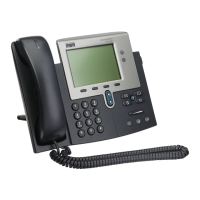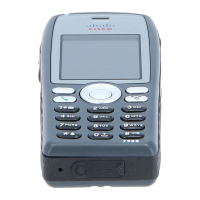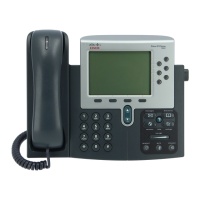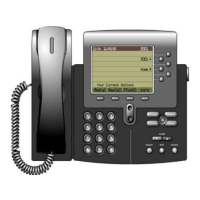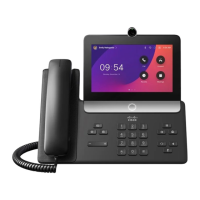Usage notesPurposeNetwork protocol
DHCP is enabled by default.
If disabled, you must
manually configure the IP
address, subnet mask,
gateway, and a TFTP server
on each phone locally.
Cisco recommends that you
use DHCP custom option
150. With this method, you
configure the TFTP server IP
address as the option value.
For additional supported
DHCP configurations, go to
the “Dynamic Host
Configuration Protocol”
chapter and the “Cisco TFTP”
chapter in the Cisco Unified
Communications Manager
System Guide.
If you cannot use
option 150, you may
try using DHCP
option 66.
Note
DHCP dynamically allocates and assigns an IP
address to network devices.
DHCP enables you to connect an IP phone into
the network and have the phone become
operational without your needing to manually
assign an IP address or to configure additional
network parameters.
Dynamic Host
Configuration Protocol
(DHCP)
Cisco Unified IP Phones use
HTTP for XML services,
downloading of images and
configuration files, and for
troubleshooting purposes.
HTTP is the standard way of transferring
information and moving documents across the
Internet and the web.
Hypertext Transfer
Protocol (HTTP)
Web applications with both
HTTP and HTTPS support
have two URLs configured.
Cisco Unified IP Phones that
support HTTPS choose the
HTTPS URL.
Hypertext Transfer Protocol Secure (HTTPS) is
a combination of the Hypertext Transfer Protocol
with the SSL/TLS protocol to provide encryption
and secure identification of servers.
Hypertext Transfer
Protocol Secure (HTTPS)
Cisco Unified IP Phone 8941 and 8945 Administration Guide for Cisco Unified Communications Manager 10.0
(SCCP and SIP)
10
Network Protocols
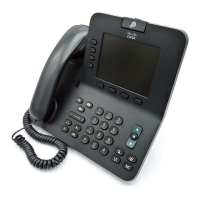
